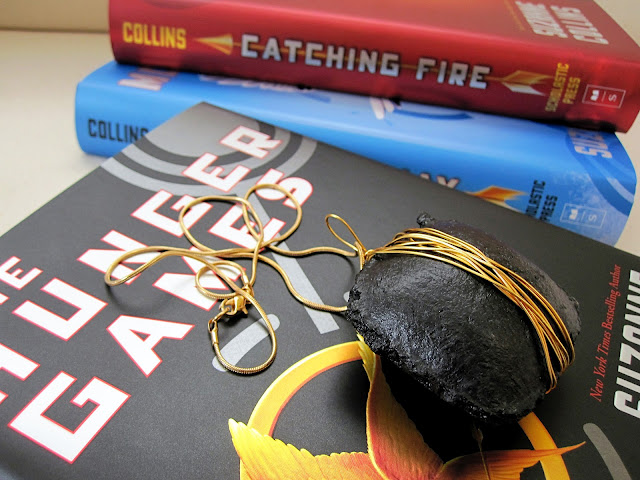After a great run, the Winning the Internet blog has been retired. However, you can still keep in touch with New Media Mentors here.
 In the “Hunger Games”, heroine Katniss Everdeen heralds from District 12—a coal mining area in the Appalachian Mountains. Life in District 12 is hard. Boys start working in the mines early so their families don’t starve, and it’s not uunusual for families to be shattered by mining accidents. In fact, Katniss’ own father died in a coal mine.
In the “Hunger Games”, heroine Katniss Everdeen heralds from District 12—a coal mining area in the Appalachian Mountains. Life in District 12 is hard. Boys start working in the mines early so their families don’t starve, and it’s not uunusual for families to be shattered by mining accidents. In fact, Katniss’ own father died in a coal mine.
District 12 residents hate the mines, but they keep working there because they have to. Panem’s spoiled Capitol relies on District 12’s coal to fuel their lifestyle of extravagance. As a result, the district’s economy and way of life are deeply rooted in the mines.
Does this sound familiar? People are suffering from these same issues in coal mining towns today. District 12 is real.
As I read the first “Hunger Games” book I couldn’t help but think about what a good opportunity this is to get a mainstream conversation going about coal. It’s a topic too often ignored by the media, but right now, tweens and teens are wearing coal jewelry and even eating coal cookies!
Pop culture has just happened to shine the light on this issue, so why not take advantage of it? The “Hunger Games” might be the biggest movie of 2012. There has been and will continue to be a ton of press on the topic, and why shouldn’t activists get in on that action?
Jumping on a hot topic isn’t necessarily a new tactic, but it can be effective.
Just last year, the National Domestic Workers Alliance (NWDA) used the movie “The Help” to bring domestic worker rights into the spotlight. NWDA ran a Twitter campaign using the hashtag #BeTheHelp, organized house parties around the Academy Awards, posted a petition on Change.org, uploaded a video to YouTube, and more. This led to exposure in mainstream media outlets like the Washington Post and thousands of new supporters of domestic worker rights.
Be creative, be strategic
Sometimes you can see an opportunity coming and you have time to prepare (as with the “Hunger Games”) and sometimes the opportunity hits you unexpectedly. Just keep an eye out for opportunities and be ready to pounce on them when they arrive. That means working quickly (even if you have the idea at 8pm on a Saturday night), and developing a strategic campaign plan.
If you have time to prepare
Think hard about how you can repurpose content you’ve produced for an issue like coal mining or how you can reboot a campaign you’ve run. You probably want to plan a creative microsite that focuses exclusively on your target audience, removes your brand from the equation, and provides solid information and actions for people. Focus on creating something that people will want to share on social networks and/or will be fodder for a news story.
Also spend time thinking about how you’ll push traffic to the site to get the ball rolling. You’ll need to seed the campaign, most likely with Facebook, Twitter, and your address book.
If you don’t have time to prepare
If a pop star suddenly makes an outlandish comment relating to your cause or something else happens suddenly, you’ll need to be quick and creative. These are the same principles folks applied recently with the the Komen fiasco and the pepper spraying cop. Even through you have less time, you still need to go through the strategic planning process (don’t worry, it can be done quickly—just use bullet points and resist drafting a strategic novella). You need goals, a theory of change, a strategy and tactics. This is important, because it forces you to think things through and can save you from embarrassment.
Take advantage of platforms that are easy to get up and running with a few clicks like Tumblr. A great example of this is what Deanna Zandt did when Komen pulled funding for breast cancer screenings from Planned Parenthood. She got a bare bones Tumblr account up called Planned Parenthood Saved Me and started collecting powerful stories.
Another way to capitalize on the moment quickly and build momentum for a campaign is to quickly deploy a petition. Whether you choose your own tools, Change.org, Signon.org or something else, just get it up quickly. When Kobe Bryant made a gay slur, a 35 year-old accountant used the incident to create a Change.org petition asking the San Francisco Giants to create an It Gets Better video. He collected over 6,500 signatures, and the Giants became the first professional sports team to create a video for the It Gets Better project.
When it comes to developing creative tactics, the sky’s the limit! Take the opportunity to engage your supporters in a fun way and create content that will be shared on social networks.
Know your audience
This sounds simple, but for any of this to work you have to know the material and your audience. In the case of the “Hunger Games” you’re primarily looking at an audience of tweens, teens, and adult pop culture junkies (yeah okay, and some new media bloggers in their 30s). Consider this when you’re developing the tone and voice for your work.
It should fit with the the movie or other pop culture opportunity and appeal to your target audience. It’s possible to get really creative here and use the same villains and heroes but work in your own points. The Center for Disease Control’s Zombie Preparedness guide is a great example.
You also want to jump in places you know your audience will be talking. That could be on Facebook, Twitter or maybe even specific fan forums.
Think about search
When you’re dealing with a pop culture phenomenon you’re going to have a lot of people searching and talking about the topic online. Just by being smart about how you write posts about your issue or create microsites can have big returns. For example, about two weeks ago Raven wrote a post titled “The anatomy of Kony 2012” right as the video was blowing up. The post performed well on its own, but close to 40-50% of the views came from Google searches related to the video. If you have an advertising budget, you may want to spend some of it on things like Facebook, Google and Twitter hashtag ads.
You don’t need a professional team of stylists or years of experience handling a bow and arrow to run a successful pop culture-based campaign—just a timely idea and some guts. So think things through, but don’t hold back! And—I couldn’t end the post without saying it—may the odds be ever in your favor.
Photo from Rae Gun Ramblings.




Comments are closed.